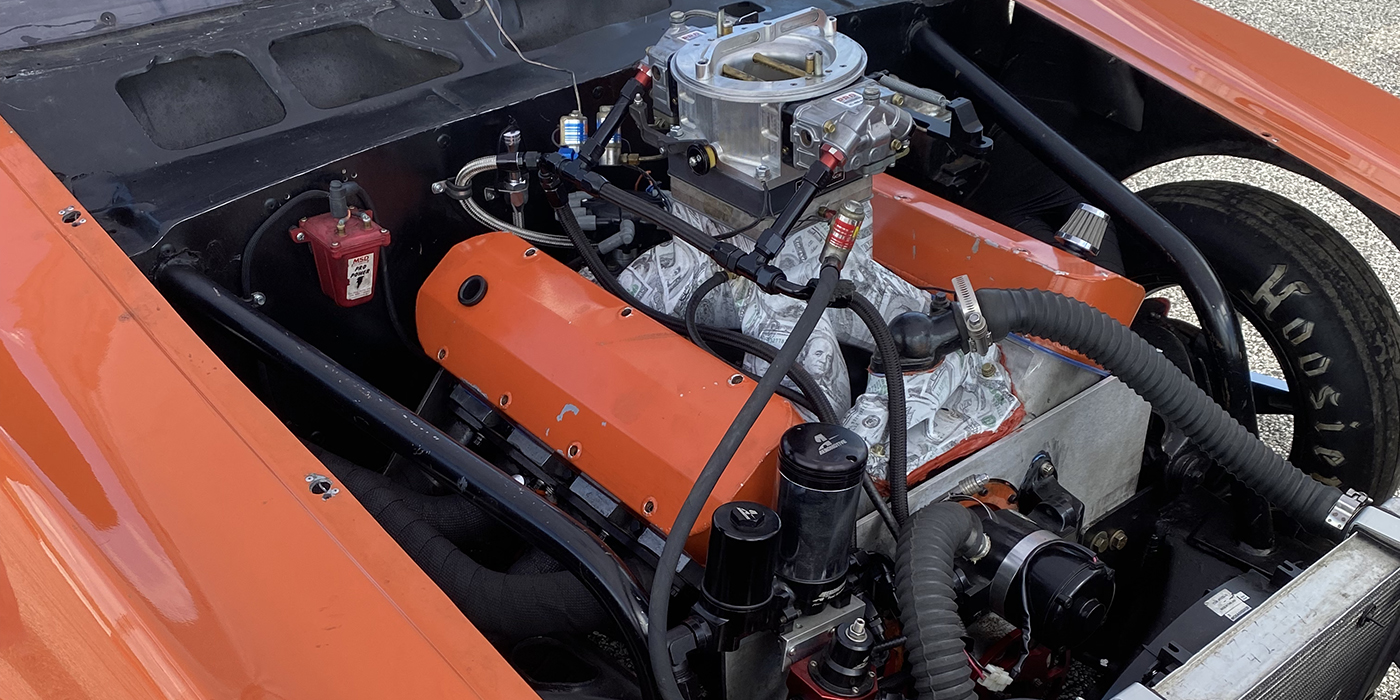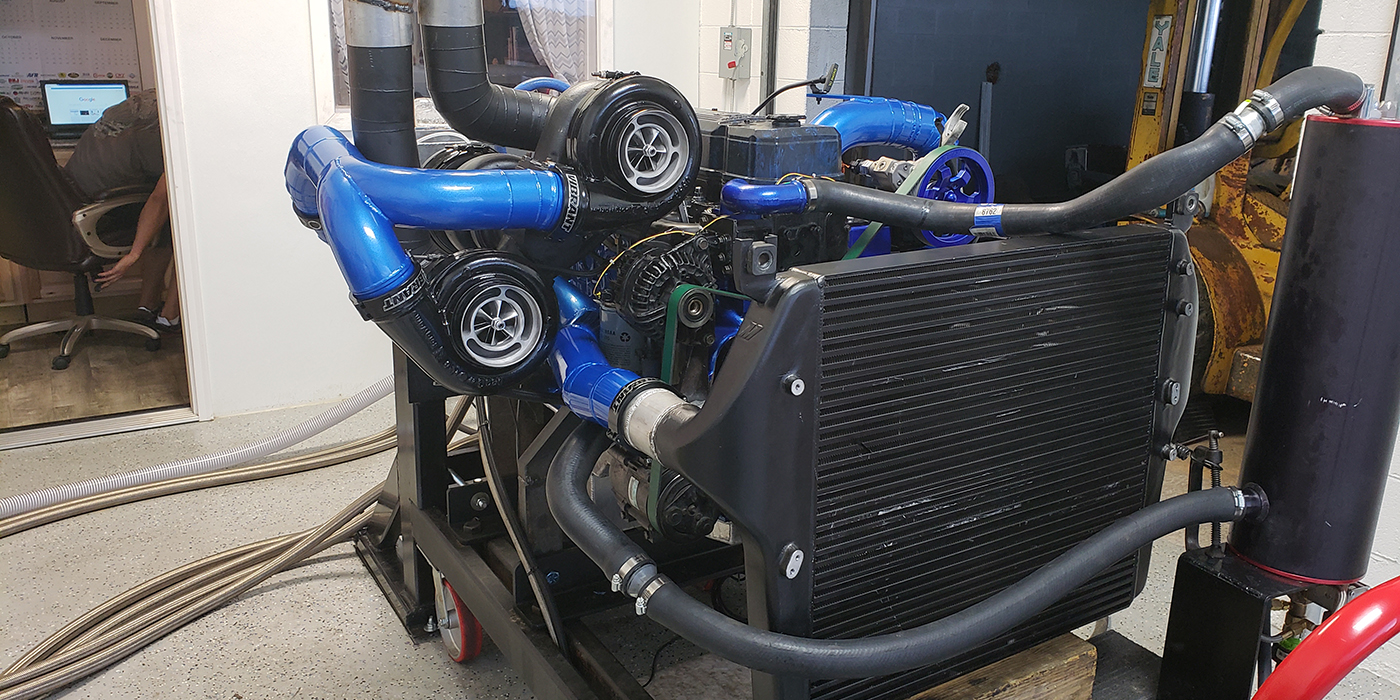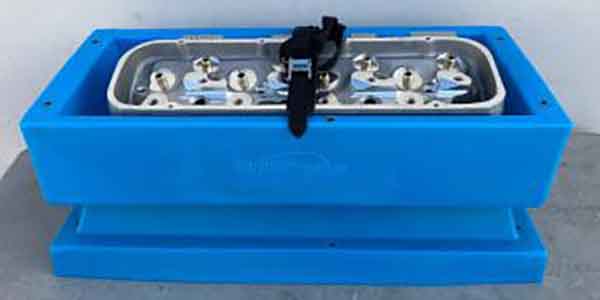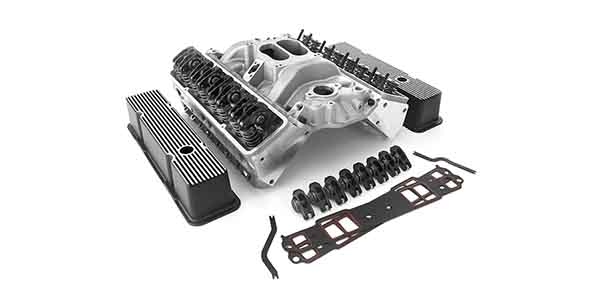On the surface, flow bench testing seems easy, but it’s not. Many in the industry have become solely fixated on cubic feet per minute (cfm) numbers, placing importance on a number that is easily manipulated and ignoring other data about a cylinder head’s performance. This thinking would make flow bench testing seem easy, but this thinking is wrong and won’t do you any favors come race day.
Here is a deeper look into flow bench testing and what you really need to know to have the right cylinder head and induction system set up for your engine.
Experienced cylinder head designers and head porters often tell people not to pay attention to flow numbers, but that does not mean that flow numbers don’t matter. This distinction is often lost in translation. Flow numbers are important, and they do have meaning. Just not the meaning most people attribute. Airflow numbers give insight into the potential for power. However, they don’t guarantee you will make more power.
“What professionals in the industry really mean to say is flow numbers alone don’t matter and cannot be used to judge the power potential of a particular cylinder head design,” says Darin Morgan, manager of the cylinder head department at Reher Morrison Racing Engines. “Flow numbers are just one variable used for various equations to analyze port characteristics in a very complex system. You can have 10 different ports with the same exact flow numbers, yet they can vary wildly in RPM range, acceleration and power.”
The complexity of cylinder head set up and flow bench testing comes in the form of math, aerodynamics, thermodynamics and the physics it takes to design the correct port and manifold design for a particular engine combination. These processes take years to master.
By the Numbers
Cylinder heads often can be close to one another volume-wise, but they can vary drastically in flow curve. People mistakenly believe that if they buy a cylinder head that flows more air and has a big CFM number, they’re going to make more power. It’s really easy to get flow numbers – just make everything big and put it on a big bore and you’re done. However, the testing data will be useless to an engine builder without knowing all the other variables you need to know.
The factors that determine the performance of a cylinder head are complex. A head that is ported without considering air speed, the size of the engine, the rpm range, the location of the valves, and a dozen other parameters isn’t going to be the best head, regardless of its peak airflow.
There are many questions that are much more important than airflow: How far are the valve heads off the cylinder wall? What’s the ratio of valve size to bore diameter? What’s the ratio of the airflow to the size of the valve? What’s the size of the port, what’s its taper, how high is the short-side radius? The answers to these aren’t as simple as comparing a flow number, but they are what really make a difference in an engine.
“When I flow test a cylinder head, the CFM number is the last thing I look at,” Morgan says. “The flow bench tells me air speed, and there are really three rules to making horsepower – air speed, air speed, air speed. We design a port that has to flow X amount of air, but it also has to have X amount of average velocity, X amount of peak velocity, and you have to tune the runner harmonically on the system and on the bench itself. If you design the port properly, it will automatically flow a lot of air.”
Valve and seat configuration is the most important area in the whole induction system because it controls the air entering the cylinder.
“We want to make that area as efficient as possible,” he says. “Flowing the most air is easy, but it won’t have any air speed. So there is a give and take there and a balance that has to be struck between the mean air speed, peak air speed and air flow. Without all that information, an engine builder can’t make a reasonable decision. People go shopping for CFM numbers because they don’t know all the underlying things that go into it.”
So you’ve put a cylinder head on a flow bench and you have a bunch of numbers. What do those mean? Morgan looks at the discharge coefficient.
“The discharge coefficient is using the area available to me at maximum efficiency,” he says. “If you don’t have a high discharge coefficient, you can’t pull fuel, you can’t move air through the engine and it won’t accelerate. Secondly, average air speed in the system has to fall in the 246-268 feet per second range. The peak velocity should not exceed, depending on piston speed and other factors, between 285-310 feet per second at the tightest area in the port. Two-valve, push-rod engines have a pinch point and no matter how we avoid it, we always end up with a slight pinch point. That pinch point’s air speed should never exceed 300, and if you do that, you know you’re safe.”
What you have to keep in mind is bigger ports don’t necessarily make more top-end power. The right size port makes the most top-end power.
Understand Your End Goal
The cylinder head designer and flow bench tester need to know your end goal. With a couple of measurements of the cylinder head, an experienced veteran like Darin Morgancan tell you whether it will hit its target or not. If the measurements are in line and it’s a good cylinder head for the combination you want, it can be put it on the flow bench to see if it has the flow potential to do what you want to do.
“There’s a million ways to get 420 cfm, and there’s only one right way,” Morgan says. “Every single cylinder head is engine specific. The engine’s intended use is very specific to the induction system design. Two engines that make the same exact power at the same RPM will have different induction system designs whether they are a jet boat engine, truck and tractor pull engine or a drag engine. The engines will have different cylinder heads on them because they operate dynamically different.”
A jet boat goes up against an RPM and holds there. A truck and tractor pull engine will hang the RPMs at 9,600 and then draw them back to 9,000. A drag engine has to accelerate through the gears.
“All three have completely different intended uses, so runner links, port sizes, valves sizes, and chamber dynamics will all be different,” he says.
Drag Engine: A drag race engine or an engine that has to accelerate through multiple gears is very, very sensitive to change and requires a finite combination. “You’re either on with your air speeds, camshaft and manifold or it’s off,” Morgan says. “We put the air speeds as fast as we can get them with the discharge coefficient as high as we can get it so that it’s on the edge of nosing over or going too fast. At that point it would spike at the fuel curve. It would use more fuel at the top of the engine’s gear change and help it reaccelerate at the bottom.”
Truck pull engine: Because this engine gets wound up, it doesn’t have to accelerate up through the power band. Drivers take it right to 9,200 RPM and then it slowly climbs and doesn’t have to use a lot of energy to accelerate the internal components. “You can make the ports a little slower (10 feet per second slower). This change will help it make more power,” he says.
Jet boat engine: Again, using the same engine, let’s say its maximum efficiency is 8,500 RPM at the pump. “We would cam it and shrink the ports back down to where the air speed is about 20 percent below critical max for choke, right where the pump is most efficient so I can get the most air speed and most cylinder fill right there,” he says. “Then I would harmonically tune the induction system to be tuned at exactly that point.”
The cylinder head needs to have a flow that is reasonably compatible with the expectations of its use. For all three of the above combinations you’d have different sized ports, different length runners, different manifolding, and different camshafts.
Common Pitfalls
Again, flow bench testing and focusing on just CFM seem easy, but that’s where people make what amounts to wrong decisions. There are numerous pitfalls you need to watch out for.
“The first pitfall I see is not flowing on the bore size that’s going to be used on the engine,” Morgan says. “I see this problem industry wide. If you flow a cylinder head on a 4.600˝ bore and put it on a 4.500˝ bore engine, it can kill 50 hp because it leaves a ridge all the way around. People buy heads that were designed for a 4.600˝ bore that flow 420 CFM and put them on a 4.500˝ bore and they end up flowing 390 CFM. The problem occurs because that valve size and that port is designed to flow X-amount in order to get the air speed in a certain range. So now you’ve not only killed the airflow, but you’ve killed the air speed and completely destroyed the dynamics of the cylinder head.”
Another pitfall of flow bench testing is not flowing with the valves you’re going to be putting in the engine. The whole testing regiment has to mimic the engine or the data is useless.
“This is why if you shop cfm numbers you will lose,” Morgan says. “CFM is one of only 50 variables that matter, but it is the only one the general public knows to pay attention to. Those other 49 variables matter to be able to design an induction system and properly match it to an engine combination.”
A third pitfall is not calibrating your flow bench. Calibrating a flow bench is as easy as getting on the phone and ordering a scientific calibration plate. Despite this ease, the majority of flow benches have never been calibrated and it throws data way off.
Testing leakage is also an important step to remember. Every set up, no matter how good, you might have a small leak here or there.
“Sometimes it might only be 2 CFM, which is statistically insignificant,” he says. “Sometimes it’s 5 or 8 CFM, but you need to quantify that prior to your flow test so you can take that into account. This is only an issue to the head designer, because my data has to be dead set accurate or otherwise all my other equations are in error.”
Conclusion
Airflow isn’t everything. We know that there is a finite limit to how long the valves can be open before performance suffers. That is because the valve events have to be in harmony with the rest of the engine.
The same principle applies to cylinder heads. Simple airflow capacity should never be the first consideration in evaluating cylinder heads. Characteristics that are far more important include air speed, port cross-section, port volume and shape, and the relationship between the size of the throat and the valve seat. If these attributes are wrong, you can work forever on the flow bench and not overcome the fundamental flaws. So the next time you’re considering a cylinder head or reading the data from a flow bench test, make sure you understand all the necessary data for your engine and application. ν













